Alfalfa Meal and Alfalfa Pellet Production Project
Date: 12/07/2020 08:38:17 From: feed-pellet-plant.com Clicks:
As you know, the main diet of many types of farm animals is grass. But fresh grass is available from spring to autumn. In the summer, it is harvested for future use and dried in hay, which is then used to feed stall animals. However, this is very laborious and time consuming. A lot of space is required to store an adequate supply of hay for the winter. And, finally, in dry hay (especially with long storage) the supply of nutrients is much lower than in fresh grass. Modern technologies have made it possible to create new ways of harvesting grass, which help to preserve more useful components in it. These include the production of vitamin Alfalfa Meal and alfalfa pellet.
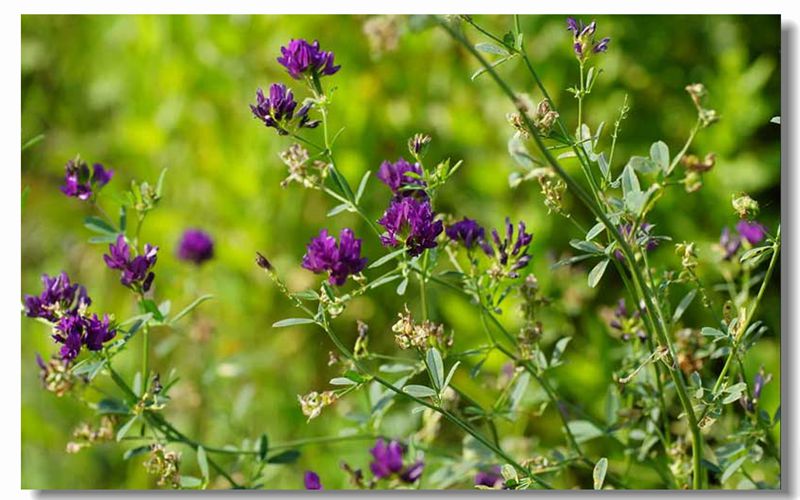
Alfalfa
New generation feed
What is Alfalfa Meal? This is a protein feed intended for farm animals and poultry and obtained from artificially dried grass, harvested in the early phases of the growing season (at the first stage of budding), dried at a high temperature and crushed to a powdery state. Grass flour is used as a substitute for hay and as a high-quality vitamin supplement with a high carotene content in combination with roughage or concentrated feed. The use of specialized equipment for the production of grass meal allows you to avoid significant losses of raw materials that are observed during natural drying of grass (breaking off shoots, flowers and leaves). Also, this production method excludes the adverse effect of moisture and the course of various biochemical and microbiological processes. Granules are made from Alfalfa Meal. Pellets lend themselves well to storage, in contrast to hay, which can cake, mold or rot with conventional harvesting. Experts say that when drying grass artificially, the content of feed units increases by at least 1.5 times, protein - 1.6 times, carbohydrates - 3.5 times, and carotene - 7-8 times. In addition, grass flour and granules are easier to digest than hay, allowing you to get good weight gain and milk yield. In the West, this type of feed has been widely used in the feed industry, primarily in the production of feed for poultry, pigs and young cattle. that when drying grass artificially, the content of feed units increases by at least 1.5 times, protein - 1.6 times, carbohydrates - 3.5 times, and carotene - 7-8 times. In addition, grass flour and granules are easier to digest than hay, allowing you to get good weight gain and milk yield. In the West, this type of feed is widely used in the feed industry, primarily in the production of feed for poultry, pigs and young cattle. that when drying grass artificially, the content of feed units increases by at least 1.5 times, protein - 1.6 times, carbohydrates - 3.5 times, and carotene - 7-8 times. In addition, grass flour and granules are easier to digest than hay, allowing you to get good weight gain and milk yield. In the West, this type of feed has been widely used in the feed industry, primarily in the production of feed for poultry, pigs and young cattle.
The production of grass flour and granules from freshly cut grasses is a promising business, because the yield of succulent feed is several times higher than the grain yield. However, the need to strictly adhere to technological requirements and expensive equipment make it very expensive. This production assumes a continuous process, carried out through the complex mechanization of all stages of the preparation of Alfalfa Meal. These stages include mowing the green mass, loading and subsequent transportation of raw materials, drying, grinding, storage. Let's consider them in more detail.
Production process of Alfalfa Meal and alfalfa pellet
As raw materials for the production of flour, sown annual and perennial grasses, meadow grasses with a high content of legumes, etc., vetch with oats, alfalfa, clover, goat's rue, nettle, and lupine are used. The nutritional parameters of the feed depend on the type of collected herbs. The latter are confirmed by a veterinary certificate and / or a chemical laboratory conclusion. As in the case of fresh feed, there are three main types of raw materials: forbs, legumes (clover or alfalfa, less often goat's rue), leguminous mixtures (vetch-oat mixture, or the like).

The legumes to be cut should be about 50 centimeters high. The optimal harvest time for clover and alfalfa for grass meal production is at the end of the stalking phase. The duration of this phase is approximately 21 days. That is, during the growing season, when mowing legumes, you can collect 3-4 complete cuttings of high-quality green mass. Meadow grasses begin to mow during the stemming phase (during this period the plant height is about 30 cm). The quality of the finished product is largely dependent on the quality of the raw material for cutting or grass flour. Experts advise using grasses of one cut for no more than 12 days. It has been scientifically established that most of the carotene in plants is contained in the morning hours from 6 to 10 am. Then its level begins to decrease, and by 20 hours its amount may decrease by 4-6 times compared to the initial one.
To increase the performance of dryers, you need to chop the herbs as best as possible. The maximum permissible particle size at the first stage of raw material procurement should not exceed 110 mm. At least 80% of its total volume must be particles up to 30 mm in size. Believe me, the time spent sharpening and adjusting the mower-chopper blades will pay off in the future with savings on fuel (one of the biggest expense items) and a significant improvement in product quality.
The total weight loss when cutting grass and loading it into transport should be no more than 2%. To harvest grass mass with its simultaneous crushing, special equipment is required: self-propelled forage harvesters (Don-680, Maral-125, KSK-100A, etc.), semi-mounted forage harvesters (Polesie-3000), forage harvesters complexes or trailed forage harvesters with tractors of traction class 1.4; 2 and 3. The harvester is set up for fine cutting.
It is very important to establish the process of transporting the crushed mass to the place of further processing of raw materials. At the same time, its loss or contamination must not be allowed: the period between mowing fresh grass and drying it (including the period of storage on the site at the drying unit) should not exceed two to three hours. The fact is that in a loose heap, crushed grass quickly warms itself up, as a result of which it loses its most valuable qualities. In order to avoid this, it is necessary to synchronize the work of the transport and the dryer. Tractor trailers and dump trucks with additional mesh sides are used as transport. The boards will minimize losses, preserving the grass during loading, transportation and unloading.
So, less than three hours after mowing, the grass should go to drying, after which the grass mass will be ground into flour. The crushed mass is fed to the drying unit on the feeder tray, from which it enters the drying drum via a conveyor and an inclined conveyor. Drying is carried out at a raw material heating temperature not exceeding 70 ° C The relative humidity of the finished herb flour should be 8-12%, and the herb cut should be 10-15%. Violation of these requirements (for example, overdrying of raw materials to 5-6%) can lead to a loss of carotene and protein mass, as well as to an increase in the risk of fire. And underdrying the mass can overload the crusher's electric motor and cause frequent clogging of the sieves. According to the requirements, the loss of carotene during the drying process should not exceed 5%, and the loss of dry matter should not exceed 2%.
For drying, high-temperature drying units can be used (they differ in productivity - from 0.5 to 1.5 tons of dry product per hour) or low-temperature dryers, where the air is heated to 100-130 ° C using heat generators, and the mass is processed by an ultra-high electromagnetic field. frequency, which can significantly speed up the process and improve product quality. At the outlet of the drum, heavy particles and foreign inclusions are separated from the dried mass.
Using the same line, the obtained raw materials can be used to produce grass flour, grass granules and grass cutting. The technology for producing grass cutting is generally the same. The only difference is that the dry mass from the cyclone does not go into the crusher (as for the production of flour), but into a special hopper or a tractor trailer, where it is kept according to fire safety rules for at least twenty hours, and then is sent to a warehouse with a level humidity 17-19%. Grass cutting takes a rather large volume, so at the next stage of production it is more expedient to briquette it. To do this, you will need additional equipment - press briquetting machines, which tamp the cutting at a moisture content of 13% into briquettes. Upon completion of the work, it is necessary to check that the mass does not remain in the press channels with moisture above 12%.
If the production of cutting ends at this stage, then in the case of the production of grass flour and granules, this is far from the end. One of the most important criteria for the quality of Alfalfa Meal is the percentage of carotene in it. Since this percentage inevitably decreases during the processing of grass mass, in order to reduce losses, the antioxidants Santoquin or Diludin are introduced into the artificially grown feed at a dose of 0.02% of the mass of the processed feed. This reduces the loss of carotene by 2-2.5 times. Antioxidants must be dissolved in a filler, which is fats or water (in the case of the hydrochloric salt of Santoquin).
In the next step, after grinding, the herb flour is granulated. This procedure has several advantages. Granules are more convenient to use (for distribution to animals). This form can reduce the need for storage space by 3-3.5 times (especially compared to grass cutting), reduces losses during transportation and storage, and is also more convenient for mechanized loading and unloading from a warehouse.
Granulation is carried out using special equipment - separate granulators with annular matrices or a granulation line. In the granulator hopper, granules of a given diameter are formed. According to GOST 18691 - 88, the diameter of the granules should be 3.0 - 25.0 mm (the most common alfalfa pellet with a diameter of 8 mm), the length - no more than two diameters, density - 600 - 1300 kg / m3, and crumbling - no more than 12% , Mass fraction of dry matter in grass flour should be within 88 - 91% (moisture - 12 - 9%), granular - 85 - 90% (moisture - 15 - 10%). The moisture level is very important, as the quality of the finished product depends on it.
When flour is pressed, the temperature in the granules rises significantly and must be quickly cooled to ambient temperature. Slow cooling leads to significant losses of carotene. Cooling down should not take more than 15 minutes, then the loss of carotene will be insignificant and keep within the norm up to 5%. For these reasons, after the granulator, the product is fed to the cooling conveyor, where it is cooled by the counterflow of air from the fan, and through it to the sieving table, where the mash is separated from the molded granules. Spread and rejected granules are returned to the granulator by means of a screw conveyor, and granules that meet the requirements of GOST are sent to the scales. The finished alfalfa pellet are poured into three-layer paper kraft bags with a capacity of 30 to 50 kg or Big-Bags 1000 kg each. Granules in bags of 30-50 kg, as a rule, they are sold at retail or in small wholesale, and Big-Bags packages are sold in medium wholesale. With large wholesale, herbal pellets are usually loaded in bulk into freight vehicles. During packaging, the temperature of the product must be equal to the ambient temperature (exceeding up to 8 ° C is allowed). The filled bags are sewn up with small sewing machines and stacked on pallets up to two meters high. For moving pallets, sending bags to a warehouse, unloading and loading, you need universal loaders. The filled bags are sewn up with small sewing machines and stacked on pallets up to two meters high. For moving pallets, sending bags to a warehouse, unloading and loading, you need universal loaders. The filled bags are sewn up with small sewing machines and stacked on pallets up to two meters high. For moving pallets, sending bags to a warehouse, unloading and loading, you need universal loaders.
There are a number of requirements for the room where bags of grass flour are stored. It should be darkened, since carotene is destroyed by light. There are no strict heating requirements, but good ventilation is needed. The optimum air temperature for storing pellets is 2-4 ° C, and the relative humidity is 65-75%. Granaries meet all these requirements. However, in the absence of such, you can do with a warehouse for storing raw materials or loose and granular feed. Aisles between stacks in a warehouse should be about one meter, and the minimum distance between the walls of the warehouse and the rows should be 0.7 meters. For the convenience of working in the warehouse, the width of the aisles between the stacks should be from 1.25 meters. alfalfa pellet can be stored in bulk in specially equipped warehouses or in inert gases with an oxygen content of no more than 1-1.5 in special storages. The latter consist of twenty hermetically sealed silos, each of which can be loaded with 50 tons of pellets, gas generators and conveyor systems.
Please note: the scheme for the production of grass flour may differ slightly from the above. Manufacturers are trying to find new solutions to reduce the cost of finished products. After all, grass meal cannot be called a cheap feed. For example, to reduce the cost of production, the grass mass is often pre-dried before drying. The withering of the chopped grass is carried out on windrows to reduce the loss of carotene from exposure to sunlight and, again, reduce the risk of contamination and spoilage of the feed. The duration of this stage depends on the weather conditions. It can be 4-36 hours before humidity is not less than 65-70%.
This additional stage allows you to reduce the costs of the drying process: increase the productivity of the unit by 50-60% and reduce fuel consumption per unit of production by 40-50%! However, it also has certain disadvantages. So, in the production of grass flour with withering, more harvesting machines will be needed (accordingly, they also need additional fuel). The process of harvesting the green mass itself becomes more time-consuming, complex and, therefore, more expensive. At the same time, in the process of collecting and wilting, the quality of raw materials also deteriorates due to the loss of leaves and inflorescences. In addition, weather conditions play an important role, which represents a certain risk (partly predictable). Finally, even in the case when this stage of processing takes place on windrows, and not in swaths, the carotene content in the grass decreases by 2-4% during its process.
There are other ways to optimize the manufacturing process. For example, some manufacturers build a raw material conveyor to keep dryers running smoothly throughout the season. The length of the season depends on the region. In the forest zone and in the north of the forest-steppe zone, it is 90-120 days, and in the southern regions - 120-150 days.
You can also use new equipment that is more economical than traditional models. These include, for example, heat generators operating on cheap fuel - straw. One kilowatt of heat when using straw as fuel costs many times cheaper than diesel fuel, firewood, gas and electricity. According to the manufacturers of such equipment, 4-5 rolls of straw or 500-800 kg of birch firewood are required per day of continuous operation of the heat generator. Up to 16 tons of raw materials for the production of grass flour can be dried per day. Thus, it is quite possible to produce about 1600 tons of alfalfa pellet per season. To provide the heat generator with fuel for the whole season, it is enough to allocate 50-100 hectares for straw.
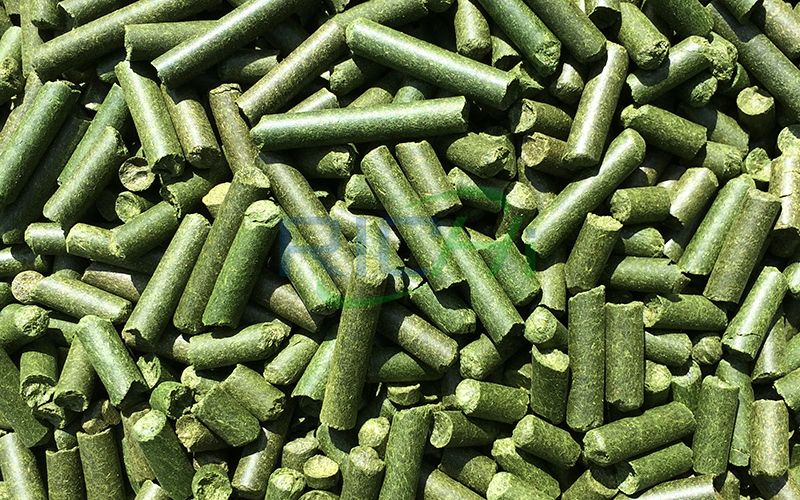
Alfalfa Pellet
In the production of grass cutting, you can increase the productivity of the equipment by 20% and reduce fuel consumption by 10% if you dry the mass in two stages: first, dry it only to a moisture content of 25%, and then dry it with active ventilation. True, this method is suitable only when the air humidity does not exceed 70%.
Expenses and income
So what does it take to get started producing Alfalfa Meal? We will make an approximate calculation based on the fact that the company will not be engaged in harvesting grass on its own. First of all, large enough areas will be required to accommodate all the necessary equipment, store finished products and stocks of raw materials. The ceiling height in the production area must be at least four meters. The total area for equipment placement is 250 sq. meters. Unlike warehouses, a production workshop must be heated (the minimum permissible temperature in it is +5 ° C) and have a water supply. The list of required equipment includes: a conveyor for feeding raw materials into a shredder, a shredder of materials IMD, a cyclone with a frame, a drying complex, a hammer crusher, a granulation unit (press granulator, bunker, control panel), column or cooling unit, packing unit (conveyor, scales, frame), control panels. Three people per shift are enough to service this equipment. The cost of a production line depends on configuration and performance. So, for example, a line with a capacity of 0.5 tons of finished product in granules per hour will cost 3.5 million rubles, a line with a capacity of 1.5 t/h will cost just over 6 million rubles, 3 t/h - 9.3 million rubles. A line for the production of finished product in bulk with a capacity of 0.5 t/h will cost almost 2 million rubles, 1.5 t/h - 4 million rubles, 3 t/h - 4.8 million rubles. Add to this the costs of transportation, installation, commissioning, and equipment training. control panels. To service this equipment, three people are enough per shift. The cost of the production line depends on the configuration and performance. So, for example, a line with a capacity of 0.5 tons of finished product in granules per hour will cost 3.5 million rubles, a line with a capacity of 1.5 t/h will cost a little more than 6 million rubles, 3 t/h - 9.3 million rubles. A line for the production of finished product in bulk with a capacity of 0.5 t/h will cost almost 2 million rubles, 1.5 t/h - 4 million rubles, 3 t/h - 4.8 million rubles. Add to this the costs of transportation, installation, commissioning, and equipment training. control panels. Three people per shift are enough to service this equipment. The cost of the production line depends on the configuration and performance. So, for example, a line with a capacity of 0.5 tons of finished product in granules per hour will cost 3.5 million rubles, a line with a capacity of 1.5 t/h will cost just over 6 million rubles, 3 t/h - 9.3 million rubles. A line for the production of finished product in bulk with a capacity of 0.5 t/h will cost almost 2 million rubles, 1.5 t/h - 4 million rubles, 3 t/h - 4.8 million rubles. Add to this the costs of transportation, installation, commissioning, and equipment training. The cost of the production line depends on the configuration and performance. So, for example, a line with a capacity of 0.5 tons of finished product in granules per hour will cost 3.5 million rubles, a line with a capacity of 1.5 t/h will cost a little more than 6 million rubles, 3 t/h - 9.3 million rubles. A line for the production of finished product in bulk with a capacity of 0.5 t/h will cost almost 2 million rubles, 1.5 t/h - 4 million rubles, 3 t/h - 4.8 million rubles. Add to this the costs of transportation, installation, commissioning, and equipment training. The cost of the production line depends on the configuration and performance. So, for example, a line with a capacity of 0.5 tons of finished product in granules per hour will cost 3.5 million rubles, a line with a capacity of 1.5 t/h will cost a little more than 6 million rubles, 3 t/h - 9.3 million rubles. A line for the production of finished product in bulk with a capacity of 0.5 t/h will cost almost 2 million rubles, 1.5 t/h - 4 million rubles, 3 t/h - 4.8 million rubles. Add to this the costs of transportation, installation, commissioning, and equipment training. A line for the production of finished product in bulk with a capacity of 0.5 t/h will cost almost 2 million rubles, 1.5 t/h - 4 million rubles, 3 t/h - 4.8 million rubles. Add to this the costs of transportation, installation, commissioning, and equipment training. A line for the production of finished product in bulk with a capacity of 0.5 t/h will cost almost 2 million rubles, 1.5 t/h - 4 million rubles, 3 t/h - 4.8 million rubles. Add to this the costs of transportation, installation, commissioning, and equipment training.
If you care about your reputation, then your products must be certified for compliance with GOST 18691-88 and accompanied by a certificate of compliance, veterinary certificate and test report. This also comes with additional costs.
Let's calculate the main costs for the production of one ton of grass meal. These include electricity, gas (firewood, hay, etc.) for drying, equipment, raw materials, wages of employees of the enterprise. The exact cost of grass flour depends, among other things, on the type of fuel that the heat generator is running on. The consumed electric power of the drying is 154.25 kW. Accordingly, the cost of electricity per ton of finished products will reach 500 rubles. The amount of gas consumed for drying is 86 Nm3 / h. Thus, the cost of gas for drying one ton will be about 200 rubles. For drying, you will need about 80 kg of firewood (also per ton), which will cost 150 rubles. It will take three tons of grass to make one ton of products. This amount of raw materials will cost from 2500 rubles. The wage fund will be at least 30 thousand rubles per month (in the regions, an employee of such a production receives 60 rubles per hour) based on work in one shift (this cost item is about 200 rubles per ton of product). Additionally, you need to include the cost of deductions for the depreciation of equipment based on the service life of the latter for eight years (about 300 rubles per ton of product).
The approximate cost of one ton of Alfalfa Meal is 4000 rubles. Its wholesale cost is 14-15 thousand rubles per ton. The payback period for such a business is one season.
If the company also organizes work on the production of artificial drying feed, the costs will be much higher. To optimize the process, it will be necessary to create whole teams, each of which will have its own sowing. You will also need harvesting equipment and qualified machine operators. Only then can productivity be maximized.
The above is the article for you: Alfalfa Meal and Alfalfa Pellet Production Project. If you are interested in our products or project solutions, please contact us. We will give you the best product quality and the best price. Email: enquiry@pellet-richi.com
Related Product
Production Line Equipment
related News
- >50,000 ton/year Factory Price Easy to Maintain Cattle and Sheep Al
- >Effects of Alfalfa Husk and Alfalfa Pellets on the Gastric Mucosa
- >Effects of Alfalfa Husk and Alfalfa Pellets on the Gastric Mucosa
- >The Role of Alfalfa in the Production Line of Cattle Feed Pellets
- >Is It Feasible To Invest In Commercial Alfalfa Plans?
- >The Benefits of Feeding Lucerne Alfalfa to Dairy Cows
- >Demand for Alfalfa in the Global Animal Feed Pellet Market
- >Lucerne Alfalfa Pellets Are High-quality Feed for Cattle and Horse
- >Turnkey Project of 1-2t/h Alfalfa Pellet Line for Cattle Farm
- >Alfalfa or Alfalfa Pellets: Which is Better for Horse?
Here you can submit any questions and we will get back to you as soon as possible. We will not disclose the information you submit to anyone, please rest assured.
Copyright© 2022 Richi Machinery. All rights reserved. Site Map


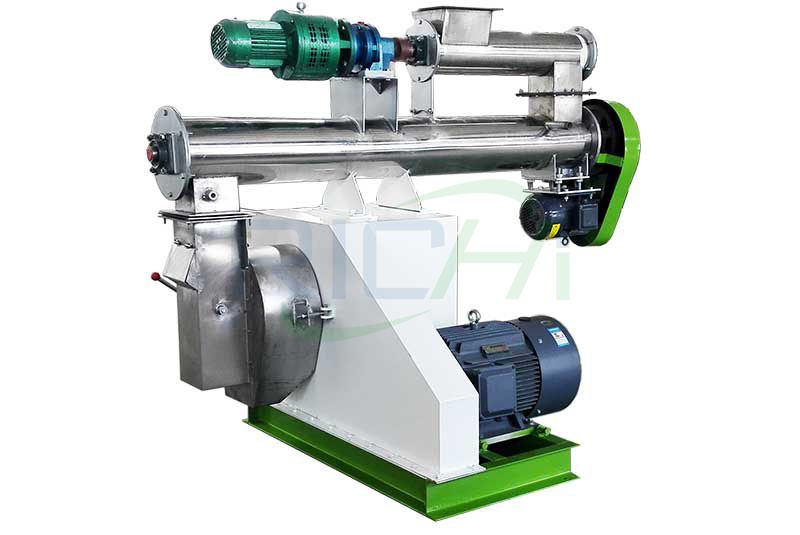
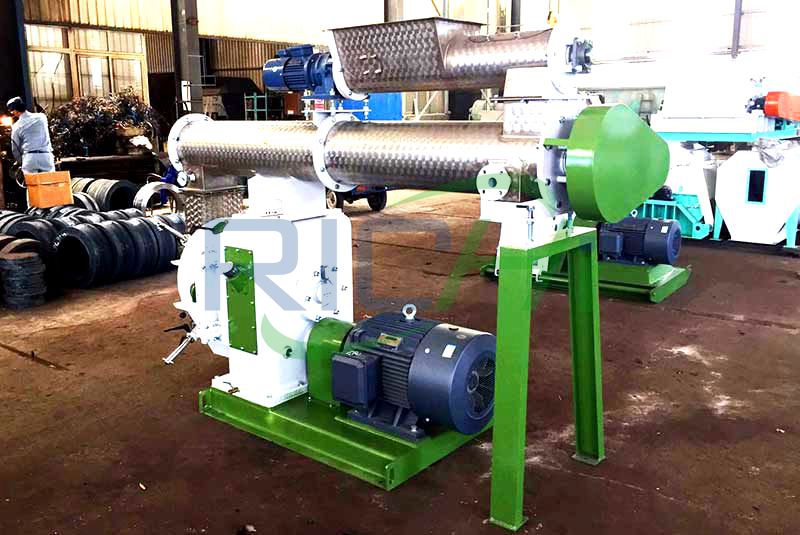
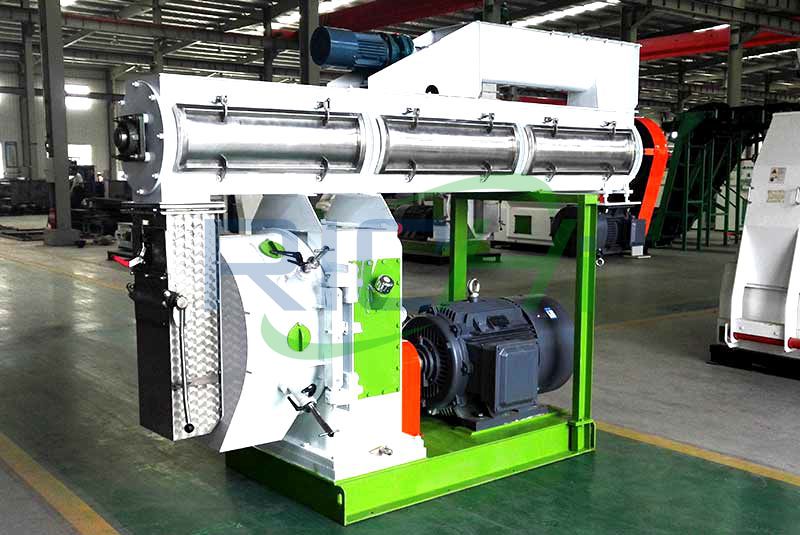
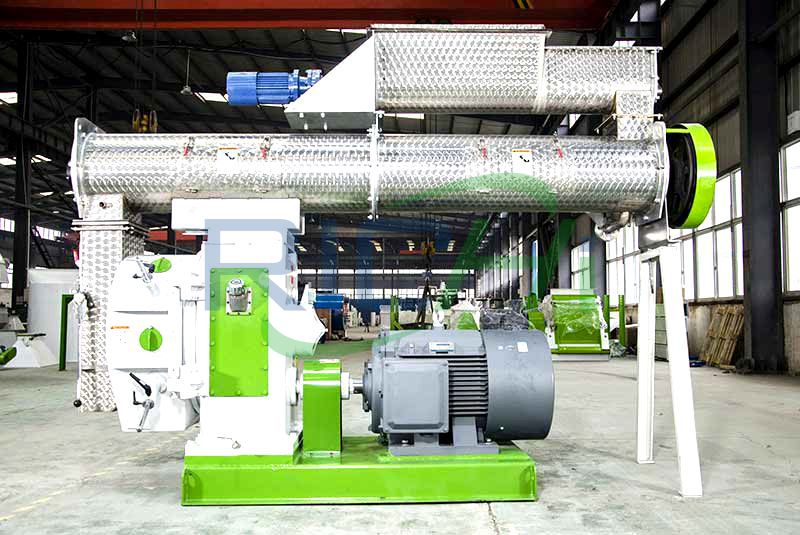
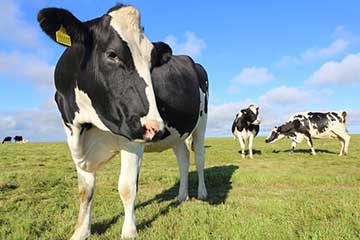
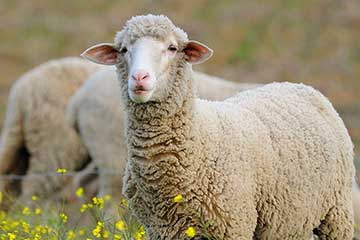

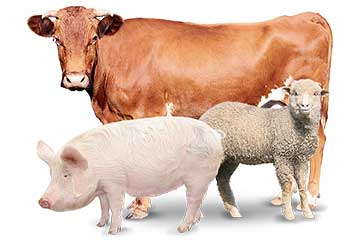
 Product Center
Product Center Get Latest Price
Get Latest Price